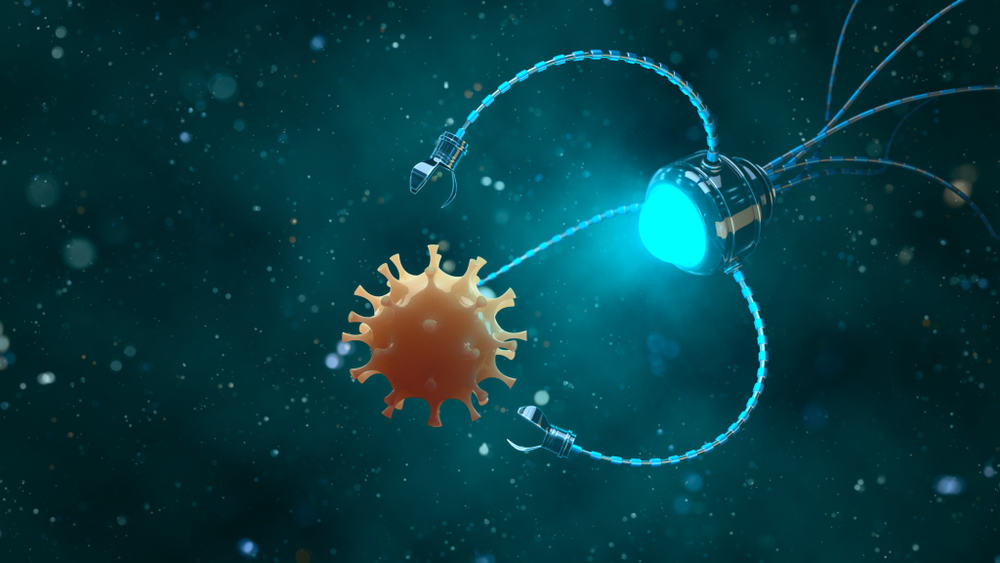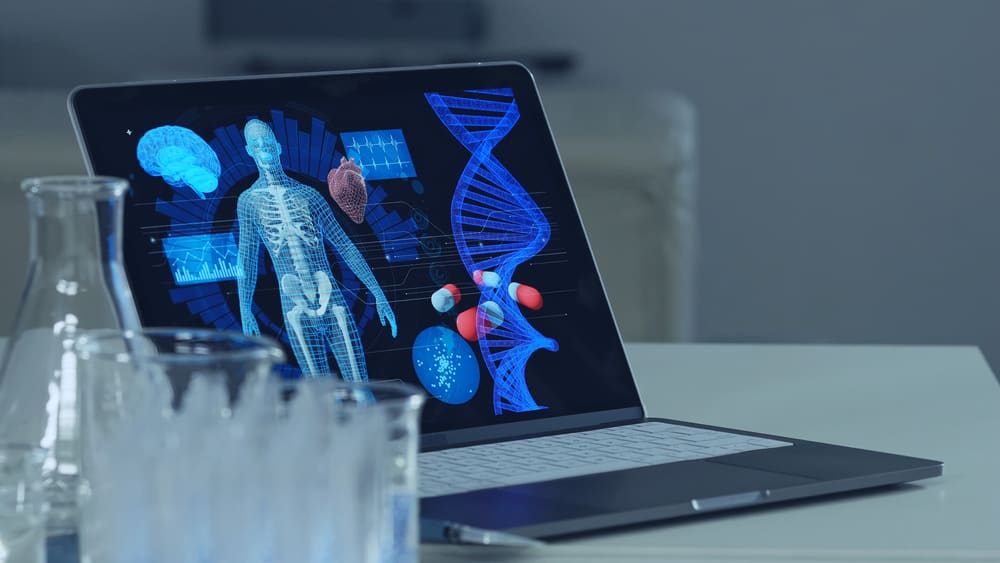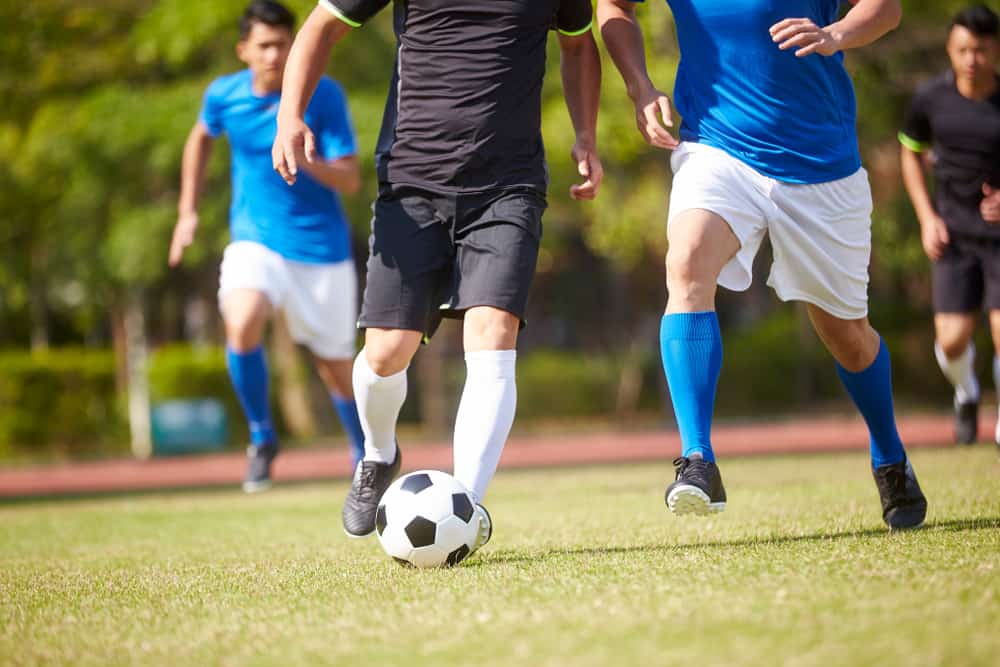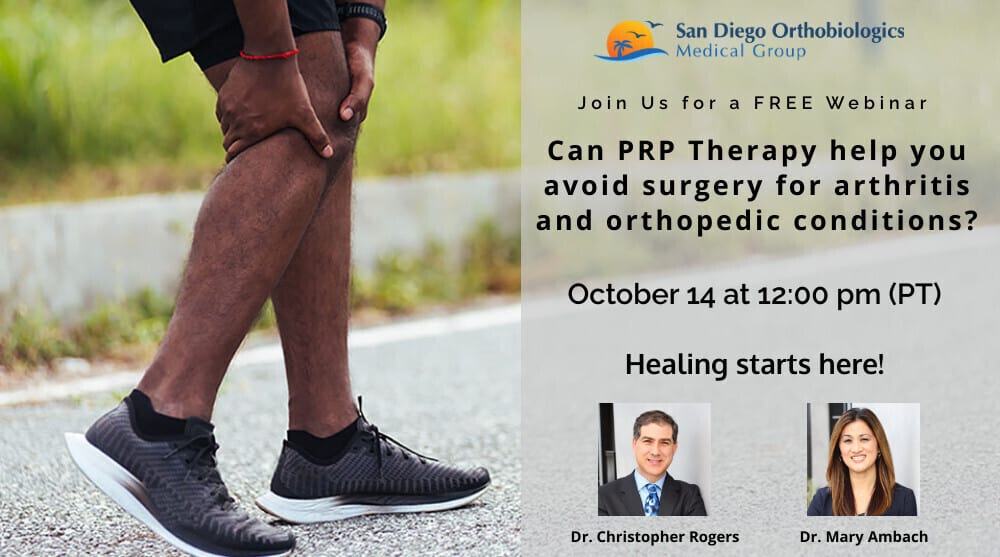
Jan 11, 2021

Join our free webinar to learn about non-surgical treatments and therapies for rotator cuff tendon injuries. Gain information on cutting edge treatments like platelet-rich plasma (PRP) and other cell-based therapies. Get answers to your questions from experts in the field of Regenerative Medicine.
Dr. Mary Ambach specializes in non-surgical orthopedics, regenerative therapies and interventional pain management. As a key thought leader in the field of Regenerative Medicine, Dr. Ambach conducts research, trains physicians and lectures at international medical conferences.
Dr. Christopher Rogers is one of the world’s leading experts in orthopedic regenerative medicine and a renowned speaker at national medical conferences. He has developed new approaches for the treatment of tendon injuries, osteoarthritis and disc degeneration which provide a safe and viable alternative to surgery.
Register for the Webinar HERE

Dec 16, 2020
In the last few years, there have been great advances in the field of Regenerative Medicine and Stem Cell Therapy. These treatments hold a great deal of promise for the treatment of a variety of orthopedic conditions. Most treatments are offered at your convenience in a medical clinic setting without the need for surgery.
What is Regenerative Medicine?
Regenerative medicine is a multi-disciplinary field that aims to restore damaged or diseased tissues by utilizing the body’s own natural healing process. By bringing together many different disciplines such as cellular biology, genetics, and tissue engineering, Regenerative Medicine has revolutionized the way physicians can treat orthopedic conditions. Stimulating our body’s natural ability to heal and promote tissue regeneration has replaced many traditional treatment options such as steroid injections or surgery.
Stem Cell Therapy
According to the International Society for Stem Cell Research’s (ISSCR) president, Douglas Melton, “Stem cell science is rapidly transforming how we think about the future of medicine. The field is actively working to address how we facilitate getting potential therapies from the lab to the clinic.”
Stem cells have the ability to develop into many different types of cells in the body, which is why stem cell therapy is important in the field of regenerative medicine. There is constant advancement of research in the use of stem cell for replacement of damaged tissue or transplants, drug testing and development and regenerative medicine.
How are Stem Cell Therapy and Regenerative Medicine Related?
There is a direct connection to stem cell therapy and the practice of Regenerative Medicine which harnesses the body’s ability to heal itself and regrow tissues. The different types of stem cells, namely embryonic, adult, and induced pluripotent stem cells, are used in the field of developmental biology to study how cells behave. Stem cells are also used to test new to drugs for the treatment of various diseases and medical conditions. In the field of orthopedics, adult stem cells play a crucial role in the cell-based therapies used to treat orthopedic injuries such as knee osteoarthritis.
What Orthopedic Conditions Can Be Treated with Cell-Based Therapies?
- Knee pain due to osteoarthritis or meniscus tears
- Shoulder pain due to rotator cuff tendon tears or tendinitis
- Carpal Tunnel Syndrome
- Golfer’s Elbow and Tennis Elbow
- Sciatica
- Chronic ankle ligament sprains
- Low back pain due to disc degeneration or sacroiliac joint ligament injury
Regenerative medicine has entered the world of clinical practice thanks to quickly evolving technology and advancements in the understanding of how stem cells work in the body. As research continues, the field of Regenerative Medicine and stem cell therapy will continue to grow, providing doctors and their patients the ability to treat many conditions that were previously untreatable.
REFERENCES:
NCBI: Regenerative Medicine
UNMC: Stem Cells and Regenerative Medicine
International Society of Stem Cell Research: Stem Cell Therapies and Regenerative Medicine
California Stem Cell Agency: The Power of Stem Cells
American Association of Blood Banks: Regenerative Medicine

Nov 27, 2020
Regenerative treatments use the body’s own unique healing properties to alleviate painful orthopedic conditions and address the underlying cause of the pain.
Regenerative medicine has the potential to repair or replace tissues damaged by age, disease or trauma. It can be used to treat a number of orthopedic conditions including the following:
- Bursitis
- Carpal Tunnel Syndrome
- Disc Degeneration and Tears
- Golfer’s Elbow and Tennis Elbow
- Herniated Discs
- Osteoarthritis of the knees, hips, back, shoulders and neck
- Plantar Fasciitis
- Tendon Tears and Tendinitis
How Do Regenerative Treatments Work?
The body is a finely tuned machine. Like any piece of machinery, it will send a signal when something is not working correctly. When a gasket fails on an engine and leaks oil, this leak is a signal that there is a problem. In the same way, when a body part fails, the body sends a signal to indicate there is a problem. Typically, it does this through the sensation of pain.
Regenerative treatments use the patient’s own cells in the form of platelet rich plasma or healing cells derived from fat tissue or bone marrow, to heal the underlying cause of the pain. These cellular products are referred to as Orthobiologics.
How Do Orthobiologics Work?
- Platelet Rich Plasma: Platelets in the patient’s own blood release growth factors and proteins that promote tissue repair, while the plasma carries the hormones, electrolytes and nutrients required to nourish cells during the healing process.
- Cell Based Therapies: Healing cells taken from the patient’s own fat tissue (adipose) or bone marrow contain adult stem cells that have the unique ability to develop into the specific kind of cell needed by the body. They possess molecules that direct other cells in the injured area to form new blood vessels, awaken more stem cells and encourage production of proteins and other materials essential for creating new healthy tissues.
- Prolotherapy (Proliferative Therapy): Natural medications that help the body jump-start its own natural healing response are injected into the injured area.
Minimally Invasive Pain Relief for Orthopedic Conditions
Orthobiologic regenerative treatments are performed on an out-patient basis and do not require hospitalization or lengthy rehabilitation. The healing cells are obtained from the patient through a needle or small cannula and are returned to the injured site on the same day.
Experienced, reputable practitioners of regenerative medicine follow the U.S Food and Drug Administration (FDA) guidelines for the performance of these procedures and follow strict protocols to ensure safety and efficacy. Patients considering regenerative treatments should seek the expertise of board certified-physicians who are specialized in diagnosing and treating orthopedic conditions. They have the regenerative medicine skills and experience necessary to promote safety, comfort and a successful outcome.
Drs. Christopher J. Rogers and Mary A. Ambach of San Diego Orthobiologics Medical Group together have successfully treated thousands of patients with cell-based therapies for more than three decades. They are board-certified in Physical Medicine and Rehabilitation. As published authors and stem cell researchers, they were chosen to participate in a first of its kind, FDA-approved clinical trial to treat knee osteoarthritis. The SDOMG facility in Carlsbad contains the most advanced Regenerative Medicine technology in San Diego and offers same day treatments with the highest level of safety, efficacy and patient satisfaction.

Oct 23, 2020
Regenerative medicine represents a complete breakthrough in modern medicine. The body’s ability to heal itself naturally is actually not a new thing. A fractured bone will regrow and heal the break. Cut yourself shaving, and the skin will heal. There are many examples of our body’s innate ability to heal injuries.
Now modern science and technology are now enabling physicians to help their patients discover new ways in which the body can heal itself. Within the specialty of orthopedics, regenerative medicine is offering healing and pain relief to patients who suffer from conditions such as osteoarthritis, herniated discs or ligaments and tendons injuries.
Orthobiologics Can Boost the Body’s Own Natural Healing Abilities
Orthobiologics are cells and substances derived from cells that are naturally found in your body. By concentrating them and delivering them to the site of injury, they can help speed up the healing process.
Here’s how it works:
When you injure a bone, muscle or tendon, the platelet cells in the blood are the first responders arriving on the scene to quickly start healing. White blood cells also rush to the injury site to ward off infection, control inflammation and become the clean-up crew [i]. Other important cells like stem cells participate in this complex symphony of repair. Specialists in orthopedic regenerative medicine can now boost these natural processes through several specialized treatments that help maximize the body’s own innate healing capabilities.
Regenerative Treatments for Orthopedic Conditions
There are different orthobiologic treatments that your regenerative medicine specialist can recommend depending on your orthopedic condition:
· Platelet Rich Plasma puts the healing properties of the patient’s own blood to work to repair damaged joints, tendons and muscles. The platelets in the blood release growth factors and proteins that promote tissue repair, while the plasma carries the hormones, electrolytes and nutrients required to nourish cells during the healing process. PRP treatments are customized to the particular individual and their injury in order to be most effective.
· Cell based therapies use cells derived from the patient’s own bone marrow or adipose (fat) tissue. These cells include adult stem cells and many other healing cells. They produce molecules that direct neighboring cells in the area to form new blood vessels, decrease inflammation and encourage formation of new healthy tissues. Stem cells are special cells that have the unique ability to develop into the specific kind of cell needed, whether that be a tendon, ligament, cartilage or bone cell. Skilled regenerative medicine practitioners use highly specialized processes to prepare these cells that are then delivered directly to the injured area to stimulate healing.
· Prolotherapy (Proliferative Therapy) uses dextrose and other natural substances that are injected into a chronically injured ligament, tendon, nerves or joint in order to help the body jump-start its own natural healing response.
Beware of Imposters
As regenerative treatments have become more widely recognized for their ability to address orthopedic conditions and the chronic pain associated with it, more and more clinics are trying to get in on the action.
If you are considering regenerative treatments for pain related to osteoarthritis, tennis elbow, degenerative discs in the spine or other conditions, you should perform due diligence on the clinic that offers it. The source, processing and delivery of the regenerative materials are critical to the success of the treatment.
Currently, the U.S. Food and Drug Administration (FDA) does not allow the use of stem cells derived from birth tissue products (amniotic fluid and tissue, umbilical cord blood) to treat orthopedic conditions because these donor products have not been proven to be safe or effective. Our board-certified specialists only use your own cells (autologous) to treat orthopedic conditions.
Maximizing the effectiveness of these treatments requires a state-of-the-art facility and equipment, as well as knowledge and experience in fluoroscopic (x-ray) or ultrasound guidance to ensure targeted delivery of the healing cells to the injured area.
Orthobiologic treatments that capitalize on the body’s own natural healing abilities is one of the most exciting opportunities in modern medicine to address and resolve the chronic pain associated with orthopedic conditions that affects millions of Americans.
Drs. Christopher J. Rogers and Mary A. Ambach of San Diego Orthobiologics Medical Group together have successfully treated thousands of patients with cell based therapies for more than three decades. They are published authors and cell therapy researchers. Their facility in Carlsbad contains the most advanced Regenerative Medicine technology in San Diego and offers same day treatments with the highest level of safety and efficacy.
[i] https://www.aarp.org/health/alternative-medicine/info-11-2008/super_healing.html
[ii] https://orthoinfo.aaos.org/en/treatment/helping-fractures-heal-orthobiologics/

Oct 9, 2020
The old adage among athletes is “No pain, no gain.” Sure, sore muscles after a hard workout are to be expected, but according to the National Safety Council, sports-related exercise accounted for nearly 800,000 injuries among adults in 2017.
These included injuries sustained from:
- Cycling
- Exercise with equipment
- Racket sports
- Recreational basketball
- Softball
- Soccer
- Swimming
Post-exercise soreness can occur up to 1-2 days after an exercise. However, if severe pain occurs during the exercise or immediately after, and if it progressively worsens and limits daily activities, you should seek consultation for a possible injury.
Breakthrough Options for Treating Sports Injuries
Regenerative medicine specialists can offer a number of options to treat sports-related injuries such as:
- Bursitis
- Tennis elbow
- Golfer’s elbow
- Tendinitis, Tendon tears, such as rotator cuff tears
- Hip and shoulder labral tears
- Ligament tears
- Meniscus tears
- Osteoarthritis
- Plantar fasciiosis
- Repetitive stress injuries
How Regenerative Medicine Treats Sports Injuries
Regenerative medicine uses state-of-the-art technology to maximize your body’s innate healing capacity. It uses your own cells to treat injuries in the joint cartilage, tendons or ligaments.
- Cell based treatments use cells derived from your own bone marrow or adipose (fat) tissue. These tissues contain adult stem cells and many other healing cells. When they are reinjected into an injured area they initiate healing. These cells produce molecules that direct cells to form new blood vessels, reduce inflammation, stimulate stem cells and encourage the formation of healthy tissue.
- Platelet Rich Plasma puts the healing properties of your own blood to work to heal damaged joints, tendons and muscles. Platelet cells from the blood release growth factors and proteins that promote tissue repair. The plasma carries hormones, electrolytes, proteins and nutrients that nourish cells during the healing process. PRP is not a “one-size-fits-all” treatment. To be effective, these treatments are customized to your specific medical condition. When performed correctly, PRP can bring pain relief and healing of injuries such as tennis elbow, tendon tears and osteoarthritis within weeks.
- Prolotherapy also known as Proliferative Therapy uses dextrose solutions and other natural substances to stimulate a healing response in chronically injured ligament, tendon or joints. The treatment can strengthen ligaments, improve stability and relieve pain. Scientific studies have demonstrated prolotherapy can be effective in treating tendinopathy, ligament sprains, tennis elbow, joint laxity, plantar fasciitis and osteoarthritis.
The “X” Factors
Great athletes are often said to possess the “X” factor, that special variable that influences successful outcomes. The same can be said of regenerative medicine treatments. The most successful regenerative treatments have the following “X” factors:
- Autologous source: Regenerative products that come from your own body (autologous) have been proven to be safe and effective in peer-reviewed research. The U.S. Food and Drug Administration (FDA) currently does not allow the use of donor stem cell products derived from amniotic fluid or other fetal tissues to treat orthopedic conditions. These products pose a risk of disease transmission or immune reaction. Moreover, these donor tissues do not to contain living stem cells, as opposed to what is claimed by the companies that market these products.
- Customized treatment: The best outcomes occur when your own cells and platelet rich plasma are prepared using the most advanced protocols to create a treatment that is customized to your specific injury.
- Targeted delivery: To maximize effectiveness, these regenerative treatments should be delivered under image guidance with fluoroscopy (x-ray) or ultrasound to ensure precise delivery to the injured area. Only physicians with fellowship training in advanced image guided procedures are certified to perform these procedures.
- Expert physicians: If you are considering regenerative medicine for the treatment of your spine or joint condition, seek a board certified physician who specializes in treating orthopedic injuries and has advanced training in regenerative medicine. These physicians are best suited to obtain the best results employing the latest research, technology and safety protocols.
Drs. Christopher J. Rogers and Mary A. Ambach of San Diego Orthobiologics Medical Group together have successfully treated thousands of patients with PRP and cell-based therapies for more than three decades. They are published authors and stem cell researchers. Their facility in Carlsbad contains the most advanced Regenerative Medicine technology in San Diego and offers same day treatments with the highest level of safety and efficacy.
https://www.iii.org/fact-statistic/facts-statistics-sports-injuries#:~:text=Basketball%20followed%20with%20about%20500%2C000,players%20have%20generated%20national%20headlines.

Oct 8, 2020

Join our free webinar to learn about PRP, an innovative non-surgical treatment option for osteoarthritis and other orthopedic conditions.
Dr. Mary Ambach specializes in non-surgical orthopedics, regenerative therapies, and interventional pain management. As a key thought leader in the field of Regenerative Medicine, Dr. Ambach conducts research, trains physicians, and lectures at international medical conferences.
Dr. Christopher Rogers is one of the world’s leading experts in orthopedic regenerative medicine and a renowned speaker at national medical conferences. He has developed new approaches for the treatment of tendon injuries, osteoarthritis, and disc degeneration which provide a safe and viable alternative to surgery.





